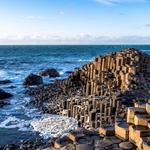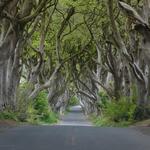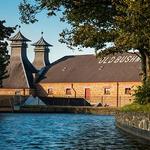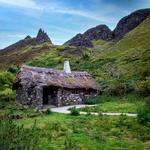Things To Do

National Trust - Carrick-a-Rede
Carrick-a-Rede rope bridge was first established in 1755 and was designed to connect Carrick-a-Rede Island to the mainland. The sole building on the island is a fisherman’s cottage and in its early days, the bridge was used by salmon fishermen. The bridge spans 20 metres and is suspended almost 30 metres above the depths of the Atlantic Ocean, providing an exhilarating passage across the sea to the safety of Carrick-a-Rede Island. Certainly not one for the faint-hearted, the crossing is a chance to experience a truly unique view of the dramatic Antrim coastline.

Giants Causeway
The Giant’s Causeway was formed 50-60 million years ago during a volcanic eruption. The ground at the time was made from chalk, a soft material that was easily penetrated by molten basalt due to the eruption. As the basalt lava cooled, it began to contract and fracture, splitting the basalt into the predominantly hexagonal pillars that are so recognisable today. The Giant’s Causeway gained its name due to the Irish myth surrounding its formation. Most likely because of the Causeway’s uniform and unusual shape, the people of Ancient Ireland created a fable to understand how the Causeway was created. A fable goes, that two Giant’s were rivals but they were kept from fighting because one lived on the Irish coast and the other lived across the sea, on the Scottish coast, where some similar rock formations can be found. Eventually, Benandonner (who lived on the Scottish side), created a bridge to cross the sea to challenge his rival; hence the name, The Giant’s Causeway.

Belfast - Capital city of Northern Ireland

The Dark Hedges
This beautiful avenue of beech trees was planted by the Stuart family in the eighteenth century. It was intended as a compelling landscape feature to impress visitors as they approached the entrance to their Georgian mansion, Gracehill House. Two centuries later, the trees remain a magnificent sight and have become one of the most photographed natural phenomena in Northern Ireland. The iconic beech trees have been used as a filming location in HBO's epic series Game of Thrones, representing the Kingsroad.

Old Bushmills Distillery
Granted a license to distill in 1608, Bushmills is the older licensed whiskey distiller in the world. Bushmills is named for the mills that made the barley and the River Bush, which remains the water source to cut our whiskey to proof today. You can take a tour to see how they triple distill 100% malted barley in copper pot stills to make a pure malt Irish whiskey.
